Nissan R35 GT-R
R950.00
1/24 Scale Model: Sports Car Series No.300 – Item No:24300
About the Model
The GT-R first made its debut in December 2007 as Nissan’s “Multiperformance Supercar.” Featuring a 480hp 3.8 liter twin-turbo V6 engine, dual clutch transmission, and independent transaxle 4WD system, the car is able to hit 300km/h top speeds and lap the vaunted Nurburgring in about 7min 30sec. This awesome performance truly makes the GT-R a supercar that can be enjoyed by anyone, anytime, and anywhere.
The Beginning of a New Legend
Then in December 2007, a new GT-R was born after 5 years. The Skylines up to that point were all highly-tuned machines, but the new car dispensed with the Skyline name and featured custom designed chassis and engine. This 3rd generation GT-R has already stamped its authority on the race track with a 1-2 finish at the Super GT 2008 season’s opening race at Suzuka and another 1-2 finish at Round 2 Okayama, ensuring that the 3rd Chapter of the GT-R’s legend will begin vibrantly.
- 1/24 scale high-quality assembly kit.
- Length: 197mm, Width: 82mm
- Aggressive form of the GT-R accurately captured.
- Suspension and interior components are assembled in a similar way as the actual car.
- Metal plated induction box add detail to the engine bay.
- Window masking stickers included.
- Metal transfers sharply reproduce manufacturer emblems and side mirror surfaces.
- Metal plated 2-piece wheels are just like the real thing.
The GT-R Legend
The Legend Begins with 50 Wins
At the JAF Grand Prix race in May 1969, the Nissan Skyline GT-R (PCG10), which was just released in February, made its debut in race-spec trim. At the heart of the 4-door sedan was the 2000cc S20 4-valve DOHC inline-6 cylinder engine. After winning its debut race, the car went on to dominate the podium at the Japan Grand Prix race in October. One year later, in October 1970, the high-performance 2-door hardtop (KPGC10), which was both lower and had a 70mm shorter wheelbase than the 4-door sedan became the basis from which race-spec cars were built. The car quickly ran up an impressive 49 wins, and although the Mazda Savanna (RX-7) thwarted its bid for 50 wins at the Fuji TT 500 Mile Race in December 1971, the GT-R would not be denied. Win number 50 came at the opening race of the Fuji Grand Championship Series in March of the following year. Soon afterwards, with regulations regarding vehicle emissions tightening and the oil crisis, Nissan downsized their racing activities and the GT-R disappeared from the podiums.
Crossing Boundaries and Categories
However, that was not the end of the GT-R legend. The 2nd Chapter of the story began in March 1990, at the All-Japan Touring Car Championship’s opening race. The 2nd generation BNR32 was the first car in 16 years to bear the GT-R name and had debuted in May of the previous year. Featuring a 2,600cc 4-valve DOHC twin-turbo inline-6 cylinder engine and an electronic 4WD system, the car was designed to conquer the Group A class. The R32 GT-R, decked out in Calsonic colors, breezed to a pole-to-finish win, lapping all other cars and cutting 2 seconds from the course record while doing so for a dominant performance. Later that year, another GT-R with Reebok livery was entered, and together the two GT-Rs claimed pole-to-finish wins at all six races. GT-Rs continued to outclass all rivals, and by the end of the 1993 All-Japan Touring Car Championship season, the car had racked up 29 straight victories.
The GT-R was also quite successful abroad, with a Castrol Skyline GT-R winning the Group A category at the Macau Grand Prix in November 1990. Other GT-Rs swept the FISA N-class podium at the Spa-Francochamps 24 Hour race in July 1990, and a Nissan works machine in Zexel colors took the first overall win for a Japanese car there the following year.
The 2nd generation R32 GT-R continued to evolve, and was followed by the BCNR33 in January 1995 and the BNR34 in January 1999. Racing success also continued as the car took part in the All-Japan GT Championships from 1994. A Calsonic Skyline (R32) took the championship 2 years in a row, the Pennzoil GT-R (R33/R34) won it in 1998 and 1999, and the Xanavi NISMO GT-R won in 2003. GT-R production ended in 2004, and race teams continued on with the Fairlady Z.
However, many private teams still used the GT-R in the N1 endurance race class, a class which allowed less modifications and where a street-spec car can really shine. From 1992 to 1995, the GT-R won every single race, and the streak continued to the Super Taikyu race series that began in 1998, with a final tally of an amazing 90 consecutive race wins.
You must be logged in to post a review.


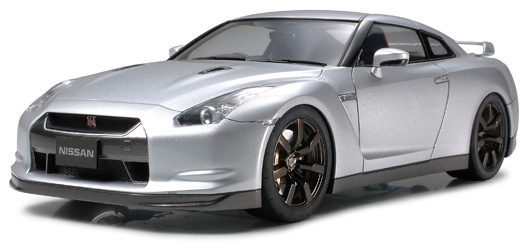

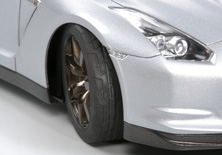
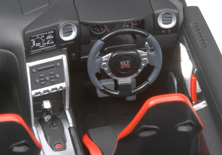
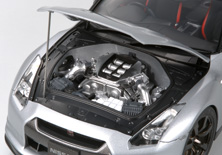

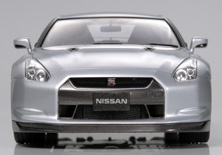
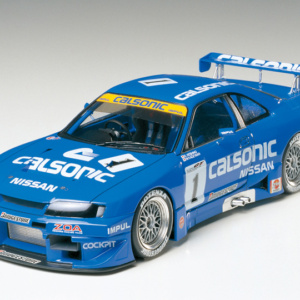

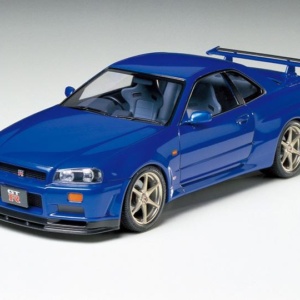



Reviews
There are no reviews yet.